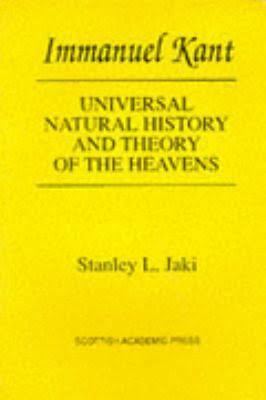7.8 /10 1 Votes
Country Germany Media type Print | 3.9/5 Goodreads Language German Originally published 1755 | |||||||||||||||||||||||||||||||||
 | ||||||||||||||||||||||||||||||||||
Original title Allgemeine Naturgeschichte und Theorie des Himmels Similar Immanuel Kant books, Astronomy books | ||||||||||||||||||||||||||||||||||
Universal Natural History and Theory of Heaven (German: Allgemeine Naturgeschichte und Theorie des Himmels) is a work written and published anonymously by Immanuel Kant in 1755, based on a 1750 work by English astronomer Thomas Wright.
According to Kant, the Solar System is merely a smaller version of the fixed star systems, such as the Milky Way and other galaxies. The cosmogony that Kant proposes is closer to today's accepted ideas than that of some of his contemporary thinkers such as Pierre-Simon Laplace. Moreover, Kant's thought in this volume is strongly influenced by atomist theory, in addition to the ideas of Lucretius.
In his introduction to the English translation of Kant's book, Stanley Jaki criticises Kant for being a poor mathematician and downplays the relevance of his contribution to science. However, such criticisms are on the whole unfair, as they are blaming Kant for not knowing about 20th-century developments.
Kant's book ends with an almost mystical expression of appreciation for nature: "In the universal silence of nature and in the calm of the senses the immortal spirit’s hidden faculty of knowledge speaks an ineffable language and gives [us] undeveloped concepts, which are indeed felt, but do not let themselves be described."
The first English translation of the work was done by the Scottish theologian William Hastie, in 1900. Other English translations include those by Stanley Jaki and Ian Johnston.
